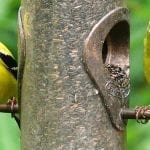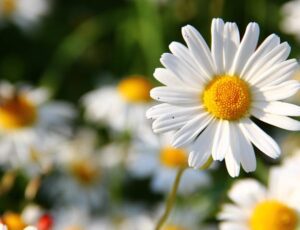
The Benefits of Ladybugs and How to Attract Them to Your Garden
Are aphids sucking the life from your tomato plants? Attract ladybugs to live in your garden, or buy ladybugs to add to your veggie patch may be the answer. If you’re wondering how to attract ladybugs to your garden, read on.
What are the benefits of ladybugs in the garden?
Garden pests such as aphids and lacewings enjoy munching on the fruit and foliage of garden veggies, fruits, and herbs. Luckily, ladybugs love a meal of these annoying, veggie-munching invaders. These spotted beetles are one of the best choices for organic gardeners to control pests naturally.
What garden pests do ladybugs eat?
Ladybugs enjoy munching on aphids, mites, and scale. These unwelcome insects chew on leaves, fruits, and vegetables. Thus, making ladybugs a great vegetable garden protector from aphids and other pests.
How do I attract ladybugs to my garden?
The ladybug is a beneficial insect that may find its way to your garden. If not, you can attract them to your veggie patch in several ways. Besides food, ladybugs require:
A water source –
Place a pebble-filled saucer in the garden. Add water so ladybugs and other beneficial insects can take a drink.
Ground cover –
Ladybugs require plant cover during the day as protection against hungry birds, insects, and other flying predators. A good choice is a fragrant herb plant such as oregano or thyme. Ladybugs also enjoy hiding in layers of leaves or straw mulch so consider adding one of these ground covers to your garden to attract ladybugs.
Fragrant plants and herbs –
The ladybug’s second favorite food is pollen. Ladybugs prefer flowering plants and culinary herbs with yellow or white blooms. Favorite food plants include:
- Angelica
- Calendula
- Cosmos
- Caraway
- Chives
- Cilantro
- Cosmos
- Dill
- Fennel
- Feverfew
- Marigold
- Raspberry Canes
- Statice
- Sweet Alyssum
- Yarrow
Another way to encourage ladybugs to visit your vegetable garden is to purchase an organic insect attractant. Natural insect attractants can encourage beneficial insects to do the work nature intended. Or, you can make your insect attractant by mixing 10 parts water, 1 part sugar, and 1 part brewer’s yeast. If you can’t find brewer’s yeast, whey yeast works just as well. Mix the ingredients in a spray bottle and spray your plants to attract more ladybugs.
Can I purchase ladybugs for my garden?
Yes! You can buy ladybugs from gardening catalogs, commercial vendors – even Amazon.
The 12-spotted one is the most common species. The nine-spotted ladybug is native to the Southeastern US, while the seven-spotted one is common in European gardens.
The ladybugs are harvested in the fall, packaged, and sold to organic growers worldwide.
Immediately after you arrive home, or receive your ladybugs by postal mail, place the container in the refrigerator for six to eight hours. The cold temperature will keep them calm, so they won’t fly away when you open the container. (The cold won’t harm them.) There’s a wide range of beetles available, so choose a ladybug species suited to your climate.
How do I release my purchased ladybugs into the garden?
Time and place are important when determining when to release ladybugs. The sun’s heat encourages ladybugs to take wing, so it’s best to let them go at dawn or dusk. The low light and cool temperatures help the ladybugs adapt to their new home and become active as the sun rises. Also, the morning dew will provide early morning hydration, encouraging them to stay.
If you release at sunset, when outdoor temperatures have cooled, and light has decreased, the spotted creatures are sure to settle in for the night. Just before sunrise or after sunset is the best time to ensure that your ladybugs will stay a while.
Providing abundant food and water will encourage ladybugs to stay where you need them. Release them near an aphid-infested plant or one of their favorite blooming plants. Water the plant beforehand. The beetles will be attracted to the leaf moisture and take a drink.
Can I breed ladybugs?
Yes, you can breed your own spotted beetles. And growing your own makes a good science study project for children. Here’s how to make a breeding container:
What You’ll Need:
- Purchased or ladybugs collected from the garden
- Small transparent plastic container with a lid
- An aphid-infested leaf or stem from a garden plant
- Cotton ball
- Water
Place the leaf or stem in the container. Wet the cotton ball and add to the container, then add the ladybugs. Screw on the lid, and you have a breeding box.
Build your own ladybug house

Building a ladybug house is a great way to provide children with a fun learning experience in the garden. Check out this DIY from BCLiving.
What You’ll Need:
- Wood from a 1” x 6” x 8” cedar board
- Sideboards: 2- 8” x 6”
- Baseboard: 1- 6” x 6”
- Overhang Board: 1- 6.5” x 6”
- Backboard: 1- 12” x 6”
- 8- 1.5” spiral nails
- A hammer
- Adhesive glue
- Hollow bamboo, squash, and dried alliums stems
- Paint (optional)
- Paintbrush (optional)
Instructions-
- Cut wood to the appropriate sizes given above in the materials list.
- Assemble the pieces by hammering them together with the 1.5″ nails—Hammer the wood pieces together to form a box with an open side.
- Paint the assembled ladybug structure (optional).
- Cut the hollowed stems into lengths of 5.5″ (14 cm).
- Layer the hollowed stems into the ladybug house. To ensure the stems stay in place, add a layer of glue to the back of the house.
- Mount the house onto a wall or fence near your garden. Check with your local hardware store about mounting options.
Hang your ladybug house in the garden and enjoy it!
Did you know? It’s considered good luck if a ladybug lands on your hand or if you see one inside your home.












